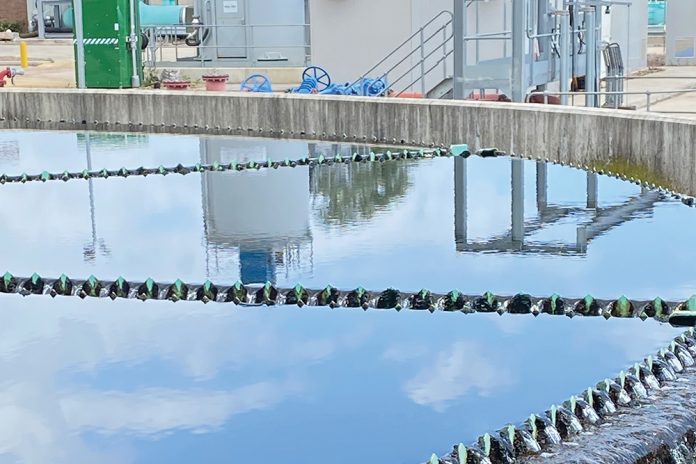Reducing phosphorus levels continues to be a priority for wastewater treatment plants globally, as operators work to meet stringent effluent targets. Mark Abbott, Sales Director at Evoqua Water Technologies, explains how operators should be demanding more from treatment solutions.
While the primary objective is to meet required nutrient levels, any technology should also improve operational expenditure, minimise maintenance requirements, and support projected population increases.
It’s widely known that the level of phosphorus in wastewater must be reduced to protect our environment. And the need to protect our waterways is a rising challenge as the population expands.
Today, phosphorus limits are controlled under the Water Framework Directive. While the directive doesn’t specify phosphorus concentrations, meeting its environmental objectives will result in many wastewater plants having to achieve lower phosphorus levels in AMP7. The UK’s Water Industry National Environment Programme (WINEP) sets low phosphorus limits for many treatment facilities. The agreed technically achievable limits (TAL) for the UK are set at 0.25mgP/l for AMP7.1
Understandably, for many operators, they must carefully balance operational expenditure, maintenance of systems, available space, and the increasing capacity of wastewater they need to treat when selecting a technology solution. At Evoqua, we have been working closely with wastewater plant operators to understand these specific challenges and develop solutions that solve them. And, one of the enabling technologies to achieve this is ballasted clarification.
The benefits of ballasted clarification technology
Two of Evoqua’s leading technologies for phosphorus removal are the BioMag® and CoMag® systems. Both are unique ballasted clarification processes that use magnetite – fully inert, iron ore particles – which is an extremely effective, fast acting ballast material.
The BioMag system is applied to activated sludge systems, providing up to 200% more treatment capacity in existing ASP basins and delivering faster and more reliable clarification than alternative systems. While the CoMag system uses magnetite to enhance the clarification process, settling chemical floc up to 10 times faster than conventional clarification, enabling plants to increase capacity and clarifier performance.
The CoMag system can achieve total phosphorus in the effluent as low as 0.04 mg/l. For the BioMag system this can be as low as 0.2mg/l. Importantly, both systems can handle variations in flow and solids.
Both technologies are simple, cost effective, low maintenance and, importantly, reliable. They are easily integrated into existing tanks, making them ideal for plants with space constraints. They also help support a site’s sustainability goals, as with both the CoMag and BioMag systems most of the magnetite is continuously recovered.
Solutions that deliver
Today, Evoqua’s ballasted clarification technologies are playing vital roles across the globe to help water treatment companies meet stringent phosphorus removal levels. In the UK, Yorkshire Water is just one of these organisations. Evoqua was selected to supply its ballasted clarification technology, the CoMag system, to two of its major wastewater treatment works.
The installations at Knostrop, Leeds and Blackburn Meadows wastewater treatment works in Sheffield, will treat a combined peak flow of up to 838,059 m3/day, making them the largest two CoMag systems worldwide. The CoMag system will fulfil a critical role as the demand on each site’s treatment capacity increases with the population, by enabling the operation to ensure discharge water that meets the Environment Agency’s new standard for phosphorus levels. At Knostrop the CoMag® system will treat water to 0.4 mg/l of phosphorus and 0.3 mg/l at Blackburn Meadows.
Sam Akeroyd, Senior Project Manager, Yorkshire Water, said: “The CoMag system from Evoqua has provided Yorkshire Water with a stand-out solution for reducing phosphorus levels to meet a projected population increase. We can now confidently fulfil and surpass our commitments to reduce phosphorus at our Knostrop and Blackburn Meadows works, while meeting our cost and ongoing operational objectives.”
Embrace innovation
It’s clear the right technology will not only reduce nutrient levels, protect ecosystems, and maintain compliance with environmental regulation, it will reap operational expenditure, efficiency, sustainability, and maintenance benefits. It’s time to demand more from phosphorus removal solutions.
For more information contact Evoqua
Water Technologies at
Ballasted Clarifiers (evoqua.com).
1 Environment Agency, Phosphorus and Freshwater Eutrophication Pressure Narrative. UK, October 2019



